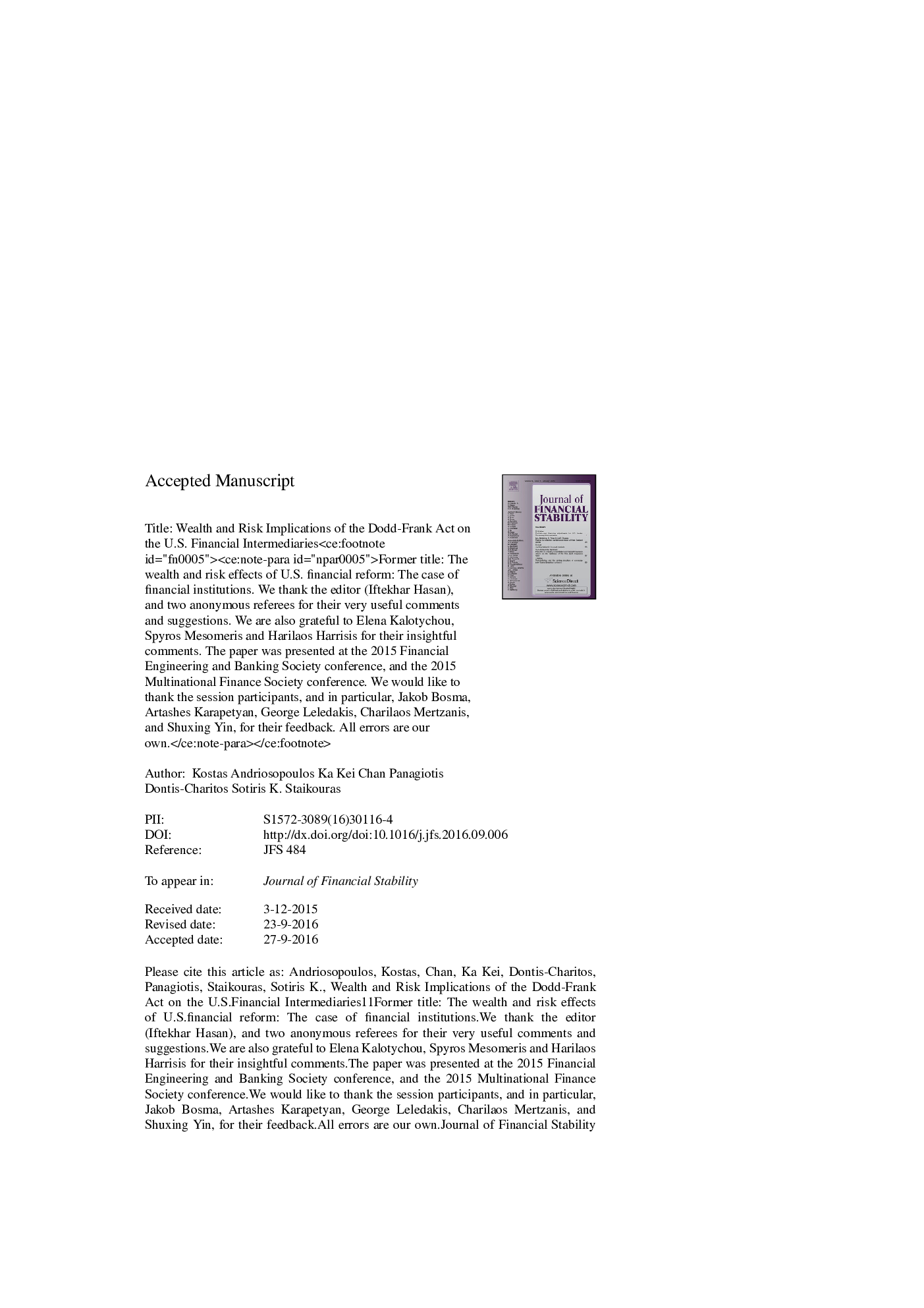| Article ID | Journal | Published Year | Pages | File Type |
|---|---|---|---|---|
| 7409348 | Journal of Financial Stability | 2017 | 46 Pages |
Abstract
We contribute to the current regulatory debate by examining the wealth and risk effects of the Dodd-Frank Act on U.S. financial institutions. We measure the effects of key legislative events of the Act by means of a multivariate regression model using the seemingly unrelated regression (SUR) framework. Our results indicate a mixed reaction by financial institutions during the various stages of the Act's legislative process. Further tests reveal that any positive reactions are driven by small and/or low risk institutions, while negative ones are consistent across subsets; except for investment banks. We also find market risk increases for most financial institutions that are dominated by small and/or low risk firms. The cross-section results reveal that large institutions fare better than their smaller counterparts and that large investment banks gain value at the expense of others. Overall, the Dodd-Frank Act may have redistributed value among financial institutions, while not necessarily reducing the industry's riskiness.
Related Topics
Social Sciences and Humanities
Economics, Econometrics and Finance
Economics, Econometrics and Finance (General)
Authors
Kostas Andriosopoulos, Ka Kei Chan, Panagiotis Dontis-Charitos, Sotiris K. Staikouras,
